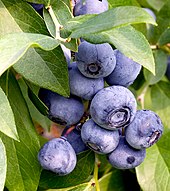A macrobiotic diet is a fad diet based on ideas about types of food drawn from Zen Buddhism. The diet tries to balance the supposed yin and yang elements of food and cookware. Major principles of macrobiotic diets are to reduce animal products, eat locally grown foods that are in season, and consume meals in moderation.

Joel Fuhrman is an American celebrity doctor who advocates a plant-based diet termed the "nutritarian" diet which emphasizes nutrient-dense foods. His practice is based on his nutrition-based approach to obesity and chronic disease, as well as promoting his products and books. He has written books promoting his dietary approaches including the bestsellers Eat to Live, Super Immunity, The Eat to Live Cookbook, The End of Dieting (2016) and The End of Heart Disease (2016). He sells a related line of nutrition-related products.

A fad diet is a diet that is popular, generally only for a short time, similar to fads in fashion, without being a standard scientific dietary recommendation, and often making unreasonable claims for fast weight loss or health improvements; as such it is often considered a type of pseudoscientific diet. Fad diets are usually not supported by clinical research and their health recommendations are not peer-reviewed, thus they often make unsubstantiated statements about health and disease.
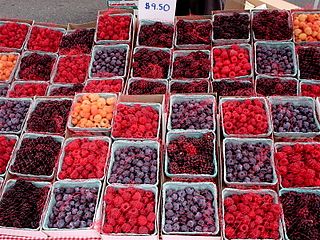
Phytochemicals are chemical compounds produced by plants, generally to help them resist fungi, bacteria and plant virus infections, and also consumption by insects and other animals. The name comes from Greek φυτόν (phyton) 'plant'. Some phytochemicals have been used as poisons and others as traditional medicine.
Xango, LLC, was a privately owned Lehi, Utah-based multi-level marketing company founded in 2002. It was acquired by Zija International in May 2017.

Raw foodism, also known as rawism or a raw food diet, is the dietary practice of eating only or mostly food that is uncooked and unprocessed. Depending on the philosophy, or type of lifestyle and results desired, raw food diets may include a selection of fruits, vegetables, nuts, seeds, eggs, fish, meat, and dairy products. The diet may also include simply processed foods, such as various types of sprouted seeds, cheese, and fermented foods such as yogurts, kefir, kombucha, or sauerkraut, but generally not foods that have been pasteurized, homogenized, or produced with the use of synthetic pesticides, fertilizers, solvents, and food additives.
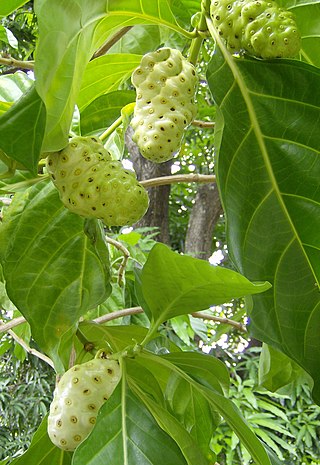
Morinda citrifolia is a fruit-bearing tree in the coffee family, Rubiaceae, native to Southeast Asia and Australasia, and was spread across the Pacific by Polynesian sailors. The species is now cultivated throughout the tropics and widely naturalized. There are over 100 names for this fruit across different regions. Common English names include great morinda, Indian mulberry, noni, beach mulberry, vomit fruit, awl tree, and cheese fruit.

Gillian McKeith is a Scottish television personality and writer. She is known for her promotion of various pseudoscientific ideas about health and nutrition. She is the former host of Channel 4's You Are What You Eat (2004–2006), Granada Television's Dr Gillian McKeith's Feel Fab Forever (2009–2010), and W Network's Eat Yourself Sexy (2010). In 2008, McKeith regularly appeared on the E4 health show Supersize vs Superskinny, and in 2010, she was a contestant on the tenth series of the ITV show I'm a Celebrity...Get Me Out of Here!

Goji, goji berry, or wolfberry is the sweet fruit of either Lycium barbarum or Lycium chinense, two closely related species of boxthorn in the nightshade family, Solanaceae. L. barbarum and L. chinense fruits are similar but can be distinguished by differences in taste and sugar content.

A healthy diet is a diet that maintains or improves overall health. A healthy diet provides the body with essential nutrition: fluid, macronutrients such as protein, micronutrients such as vitamins, and adequate fibre and food energy.

Morinda is a multi-level marketing company based in American Fork, Utah that sells Tahitian Noni juice and other products made from the noni plant. The company was founded in 1996 and has manufacturing facilities in Tahiti, Japan, China, Germany, and Utah. Morinda, formerly known as Tahitian Noni International and Morinda Bioactives, was a subsidiary of Morinda Holdings, Inc. prior to merging with and becoming a wholly owned subsidiary of New Age Beverages Corporation in December 2019.
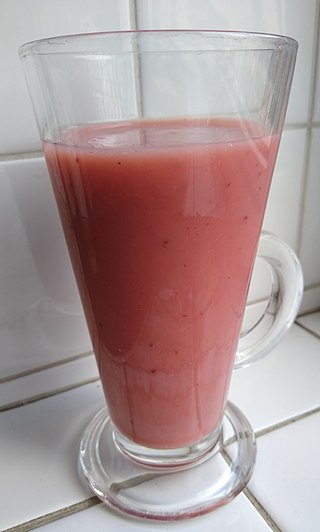
Innocent Drinks is a British-based company that produces smoothies and juice sold in supermarkets, coffee shops and various other outlets. The company sells more than two million smoothies per week. Innocent is over 90% owned by The Coca-Cola Company.

Juice fasting, also known as juice cleansing, is a fad diet in which a person consumes only fruit and vegetable juices while abstaining from solid food consumption. It is used for detoxification, an alternative medicine treatment, and is often part of detox diets. The diet can typically last from one to seven days and involve a number of fruits and vegetables and even spices that are not among the juices typically sold or consumed in the average Western diet. The diet is sometimes promoted with implausible and unsubstantiated claims about its health benefits.

Juice Plus is a branded line of dietary supplements. It is produced by Natural Alternatives International of San Marcos, California, for National Safety Associates. Introduced in 1993, the supplements are distributed by NSA via multi-level marketing. Juice Plus supplements contain fruit and vegetable juice extracts with added vitamins and nutrients.
FreeLife International, an American multi-level marketing company established in 1995 by Ray Faltinsky and Kevin Fournier, sold dietary supplements. In 2017, it was acquired by Youngevity International Corporation.
Nutritional rating systems are used to communicate the nutritional value of food in a more-simplified manner, with a ranking, than nutrition facts labels. A system may be targeted at a specific audience. Rating systems have been developed by governments, non-profit organizations, private institutions, and companies. Common methods include point systems to rank foods based on general nutritional value or ratings for specific food attributes, such as cholesterol content. Graphics and symbols may be used to communicate the nutritional values to the target audience.

MonaVie is a defunct, American multi-level marketing company that manufactured and distributed products made from blended fruit juice concentrates, powders, and purées. The company was the subject of several controversies. Health claims for its products had not been scientifically confirmed or approved by regulatory authorities, and its chairman had been previously involved in false health claims concerning another beverage company. According to Forbes, MonaVie's business plan resembled a pyramid scheme. In 2015, the company defaulted on a US$182 million loan and went into foreclosure. Florida-based Jeunesse Global took over MonaVie’s assets when it purchased the note for $15 million.
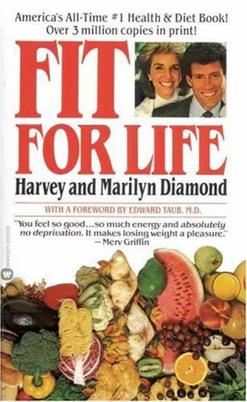
Fit for Life is a diet and lifestyle book series stemming from the principles of orthopathy. It is promoted mainly by the American writers Harvey and Marilyn Diamond. The Fit for Life book series describes a fad diet which specifies eating only fruit in the morning, eating predominantly "live" and "high-water-content" food, and, if animal protein is eaten, avoiding combining it with complex carbohydrates.
There are many types of food trends and fads, not only including weight loss or diets. Recent interest in health foods, such as quinoa and soy beans, have caused prices to skyrocket and production to vastly increase. This affects the communities in which these foods are grown or produced, and also has environmental impacts. Each food that suddenly has a popularity spike affects those who produce it and the area it comes from.
